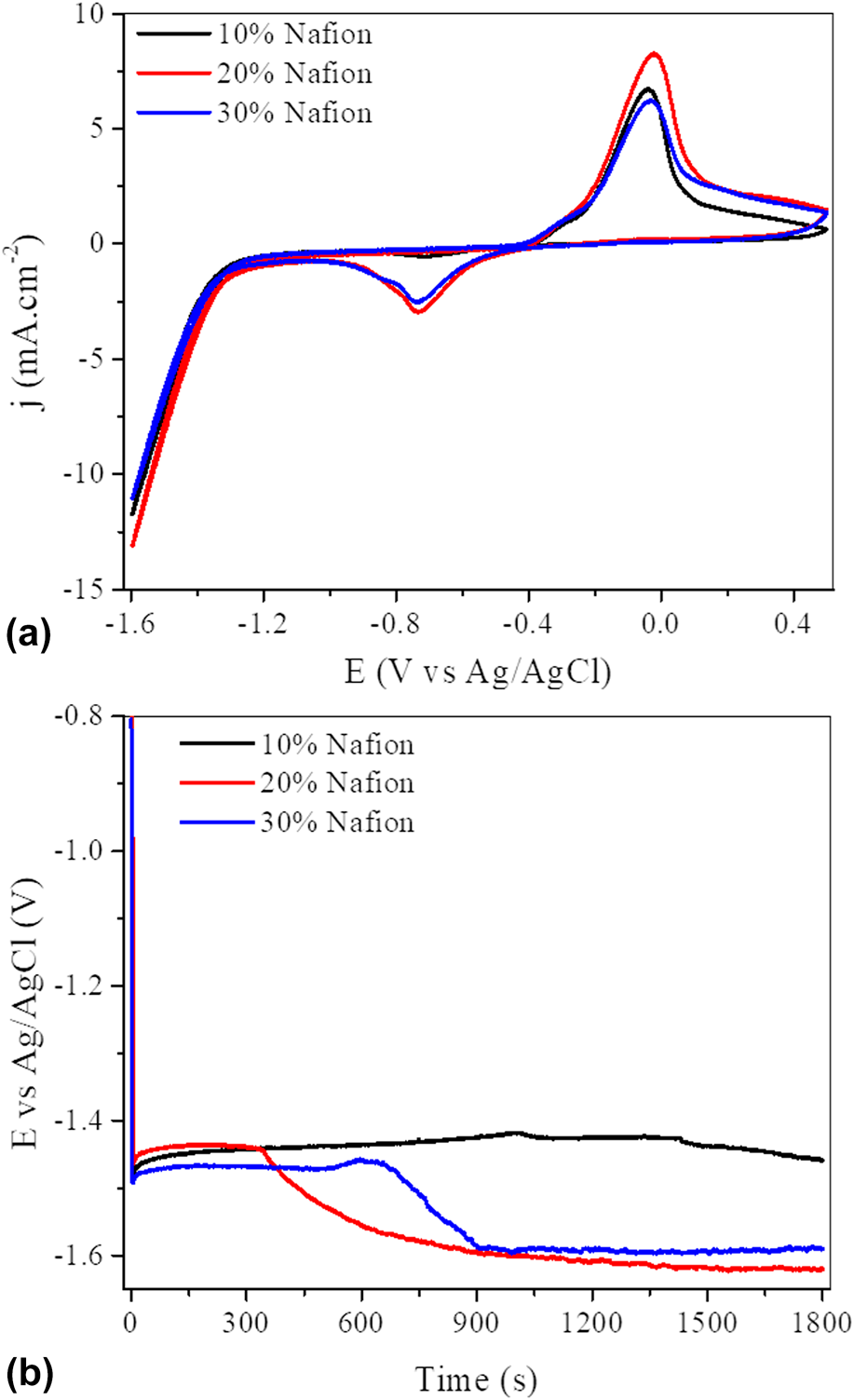Crossref Citations
This article has been cited by the following publications. This list is generated based on data provided by
Crossref.
Yang, Hongzhou
Kaczur, Jerry J.
Sajjad, Syed Dawar
and
Masel, Richard I.
2020.
Performance and long-term stability of CO2 conversion to formic acid using a three-compartment electrolyzer design.
Journal of CO2 Utilization,
Vol. 42,
Issue. ,
p.
101349.
Fan, Tingting
Ma, Wenchao
Xie, Mingcan
Liu, Huan
Zhang, Jiguang
Yang, Shuangli
Huang, Pingping
Dong, Yunyun
Chen, Zhou
and
Yi, Xiaodong
2021.
Achieving high current density for electrocatalytic reduction of CO2 to formate on bismuth-based catalysts.
Cell Reports Physical Science,
Vol. 2,
Issue. 3,
p.
100353.
Puppin, Lara G.
da Silva, Luís F.
Carmo, Marcelo
Varela, Hamilton
and
Lopes, Osmando F.
2021.
Effect of the oxidation state and morphology of SnOx-based electrocatalysts on the CO2 reduction reaction.
Journal of Materials Research,
Vol. 36,
Issue. 20,
p.
4240.
Liu, Shiyuan
Hu, Botao
Zhao, Junkai
Jiang, Wenjun
Feng, Deqiang
Zhang, Ce
and
Yao, Wei
2022.
Enhanced Electrocatalytic CO2 Reduction of Bismuth Nanosheets with Introducing Surface Bismuth Subcarbonate.
Coatings,
Vol. 12,
Issue. 2,
p.
233.
Sui, Peng‐Fei
Gao, Min‐Rui
Liu, Subiao
Xu, Chenyu
Zhu, Meng‐Nan
and
Luo, Jing‐Li
2022.
Carbon Dioxide Valorization via Formate Electrosynthesis in a Wide Potential Window.
Advanced Functional Materials,
Vol. 32,
Issue. 32,
Shawabkeh, Reyad
Al-Absi, Akram
Shamlooh, Mohamed
Khaled, Mazen
and
Hussein, Ibnelwaleed A.
2022.
Emerging Carbon Capture Technologies.
p.
161.
Okoye-Chine, Chike George
Otun, Kabir
Shiba, Nothando
Rashama, Charles
Ugwu, Samson Nnaemeka
Onyeaka, Helen
and
Okeke, Chinedu T.
2022.
Conversion of carbon dioxide into fuels—A review.
Journal of CO2 Utilization,
Vol. 62,
Issue. ,
p.
102099.
Liang, Xiao-Du
Zheng, Qi-Zheng
Wei, Nian
Lou, Yao-Yin
Hu, Sheng-Nan
Zhao, Kuang-Min
Liao, Hong-Gang
Tian, Na
Zhou, Zhi-You
and
Sun, Shi-Gang
2023.
In-situ constructing Bi@Bi2O2CO3 nanosheet catalyst for ampere-level CO2 electroreduction to formate.
Nano Energy,
Vol. 114,
Issue. ,
p.
108638.
Xu, Cuiping
Shi, Yuande
Zou, Xiaohuan
Xu, Hongyang
Zeng, Lingxing
Li, Zhongshui
and
Huang, Qiufeng
2023.
Elaborate tree-like Cu–Ag clusters from green electrodeposition for efficiently electrocatalyzing CO2 conversion into syngas.
Dalton Transactions,
Vol. 52,
Issue. 43,
p.
16018.
Zhang, Yixin
Li, Fulin
Dong, Jing
Jia, Kaichao
Sun, Tingting
and
Xu, Lianbin
2023.
Recent advances in designing efficient electrocatalysts for electrochemical carbon dioxide reduction to formic acid/formate.
Journal of Electroanalytical Chemistry,
Vol. 928,
Issue. ,
p.
117018.
Liang, Xiao-Du
Tian, Na
Hu, Sheng-Nan
Zhou, Zhi-You
and
Sun, Shi-Gang
2023.
Recent advances of bismuth-based electrocatalysts for CO2 reduction: Strategies, mechanism and applications.
Materials Reports: Energy,
Vol. 3,
Issue. 2,
p.
100191.
Dey, G.R.
2023.
Approach for C1 to C2 products commencing from carbon dioxide: A brief review.
Petroleum,
Stalinraja, Abinaya
and
Gopalram, Keerthiga
2023.
Green Sustainable Process for Chemical and Environmental Engineering and Science.
p.
69.
Wang, Yi-Cheng
Sui, Peng-Fei
Xu, Chenyu
Zhu, Meng-Nan
Feng, Renfei
Ma, Hongtao
Zeng, Hongbo
Wang, Xiaolei
and
Luo, Jing-Li
2024.
Optimizing Bi active sites by Ce doping for boosting formate production in a wide potential window.
Inorganic Chemistry Frontiers,
Vol. 11,
Issue. 3,
p.
926.





